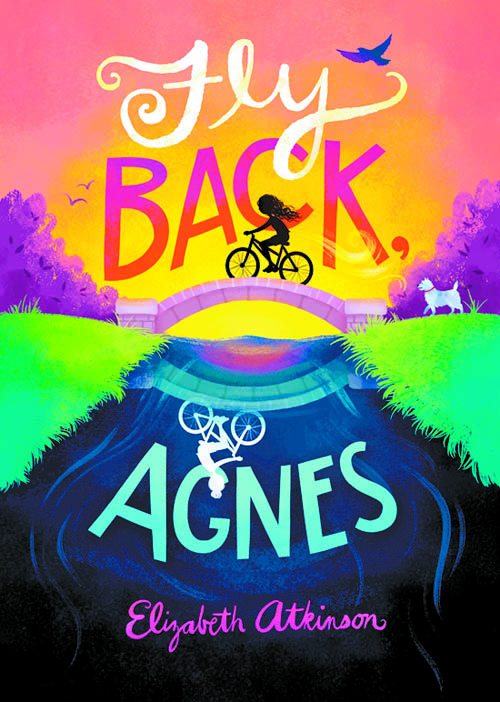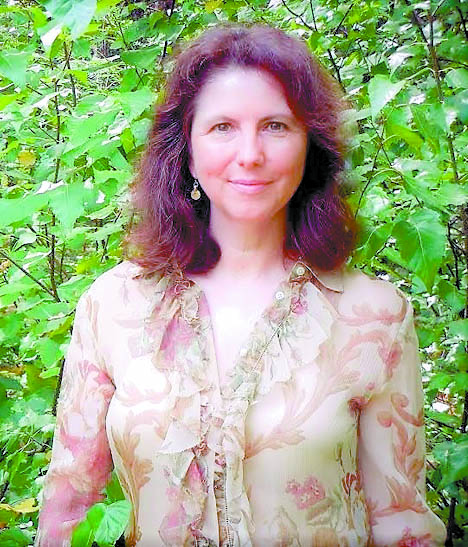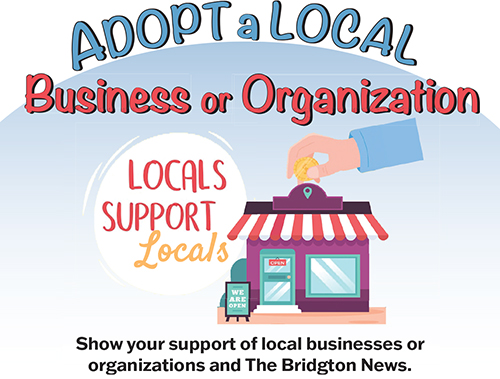Worth a Browse: Lovell author wins International Book award for children’s fiction

Number of pages: 287
Hardcover cost: $17.99
Paperback cost: Not available yet
Where to buy: Through any bookstore/bookshop.org/Amazon/B&N Number of books you have published: 5 middle-grade novels and 2 non-fiction books
Your place of residence: I divide my time between Lovell and Newburyport, Mass.
Website: www.elizabethatkinson.com
By Wayne E. Rivet
Staff Writer
LOVELL — As a “pretty average, short, shy kid” growing up in the 1970s, Elizabeth Atkinson had little interest in the academic structure or social chaos of school.
She preferred being outdoors with a friend or two, exploring with my extremely active imagination. Growing up in a family of readers, Beth visited the library on a regular basis.
“I would check out the usual books that pre-teens were reading back then, like Nancy Drew and Louisa May Alcott novels. But I would just skim them, never really connecting. Then one day, I discovered Are You There God? It’s Me Margaret by Judy Blume. I was astounded to discover Margaret was privately thinking the same things I was privately thinking,” she said. “After that, I sought out any ‘realistic fiction’ I could find. The only problem was very few authors, other than Judy Blume, were writing for budding adolescent readers at that time. During those awkward, self-conscious years, nothing entertained or empowered me like a book I loved. So, I knew one day I would grow up to return the favor.”
Indeed, she has.
Not only has she written five middle-grade novels and two non-fiction books, Beth recently won the 2020 International Book (IPA) award for Children’s Fiction for her latest work, Fly Back, Agnes, written for children ages 10 to 14.
This year’s contest had over 2,000 entries from authors and publishers from around the world, which were then narrowed down to the final results.
A resident of Lovell and Newburyport, Mass., Beth is known for her tween novel, I, EMMA FREKE, has won two Gold Moonbeam Awards, a Sunshine State Young Reader Award, the Ado-Lisant Prize in Belgium, and has been featured in Scholastic Book Flyers.
As part of The News’ continuing series of profiling local authors, Beth talks about her latest book and her development as a writer:

BN. Do you schedule time to write or do you start when ideas strike you? Or both?
EA. I schedule time to write. I don’t write every day, which would be far more efficient and productive, but it just doesn’t work for me. When I write fiction, I immerse myself in the world I’m creating, so it’s difficult for me to enter and exit that zone a couple hours a day. This is especially true when I’m writing the first draft of a novel and creating the story out of thin air. My longest writing session was literally two weeks. I hunkered down alone in my Maine cottage in the woods and I didn’t leave the house for those two weeks. The shorter sessions come during revisions, which is the part I love. I might schedule as little as two hours to revise, but always in the morning. Once the day gets going, life interferes with my imagination.
BN. What was the “inspiration” behind this book?
EA. In Lovell, where I live, there is a local farm, called Fly Away Farm, with a wonderful farm stand. Their produce and products are marked with a sweet logo of birds flying, which has always felt symbolic to me, so I wanted to incorporate the birds and that symbolism. But then, I thought it would make more sense to call my fictional farm, Fly Back Farm, since my protagonist, Agnes, really needed to fly back home and face her problems. So, that’s how that story seed grew.
BN. Give a brief account of what the book is about.
EA. Fly Back, Agnes is a heartfelt story that sensitively tackles the everyday inner turmoil of growing up and staying true to oneself. Right at the beginning, you learn that 12-year-old Agnes hates everything about her life: her name, her parents’ divorce, her best friend’s abandonment, her changing body… So, while staying with her dad over the summer, she decides to become someone else. She tells people she meets that her name is Chloe, she’s 14, her parents are married, and she’s a dancer and actor—just the life she wants. But Agnes’s fibs quickly stack up and start to complicate her new friendships, especially with Fin, whose mysterious relative runs a local raptor rehab center that fascinates Agnes. The birds, given time and care, heal and fly back home. Agnes, too, wants to get back to wherever she truly belongs. But first, she must come to see the good in her real life, however flawed and messy it is, and be honest with her friends, her family, and herself.
BBN. Did you experience bumps in the road while writing (examples), and how did you move forward?
EA. I did have a problem envisioning one of the characters. Agnes develops a crush on an older boy named, Fin, which is very tender territory for a 12-year-old girl. I wanted Fin to have identity issues, as well, so Agnes could learn from the sweet friendship they develop. But I just couldn’t see Fin in my mind and their friendship wasn’t working for me. Then one day, while I was on vacation, I met a very interesting boy and we had a terrific conversation. When I asked him his name, he said it was Fin with one “n” . . . just like my character’s name. Suddenly, I was able to envision my Fin.
BN. How did you go about developing the story?
EA. Developing a story is a messy process for me with tons of rewriting. I start with an outline, but usually stray from that outline very quickly. At the same, I’m always thinking about what I want to say to kids to let them know I understand how difficult it is to be their age, especially for those kids who are facing very adult problems. So, for me, developing a story is similar to making a hearty stew. I keep adding ingredients and spices, while adjusting the temperature and timing, until I’m ready to serve it to my guests.
BN. What worked well?
EA. Creating a map on a big piece of paper always works well for me. I can visually see where my characters live, where they go, how much movement happens in a chapter. If it isn’t working, I start over and draw a new map. No one ever sees these maps, because I have no artistic talent, so they only make sense to me!
BN. What didn’t work?
EA. A lot of writers go on writing retreats. That never works for me. I need to be alone and in my familiar spot (usually on my porch in Maine) to write. The truth is, writing a book is difficult, solitary, often frustrating work, so it takes drive and discipline to complete a novel.
BN. What do you think readers will enjoy most reading this book?
EA. I have had wonderful feedback from middle school readers who’ve said the characters seem real and that they think of the characters as friends. For me, that’s the ultimate compliment I can receive from kids. Adults also enjoy reading my books as it triggers memories of being that age!
BN. How have you grown as a writer?
EA. I now know what it takes to write a good story which, ironically, is getting harder and harder for me to do. Like a musician or dancer, a writer needs to have an innate understanding of the rhythms of our craft. However, perfecting that rhythm in your own voice is the constant challenge.
BN. Any advice you received from others that positively affected your writing style or choice of genre?
EA. I think most children’s literature editors would agree you need to start with an imperfect protagonist who grows and evolves and, at least partially, wins over the reader. However, when writing for the middle grade audience (ages 9 to 13), it’s also essential that the protagonist learns to solve their own problems, rather than adults stepping in and fixing everything. During the pre-teen years, children start to realize the adults in their lives aren’t perfect and all-knowing, so they begin to pull away and form their own opinions.
BN. What is next?
EA. To be honest, I’m having a difficult time writing during the current Covid crisis, as I think many of us feel we’re “on hold” in this strange limbo. So, for now, I’m focusing on literacy and community outreach programs, as well as author Zoom events.
A bonus: In the original manuscript of Fly Back, Agnes Beth included an Epilogue at the end of the book explaining what happened to Agnes 10 years later. (Anyone who has read the book will know why she did this!)
“My editor decided to cut the Epilogue, but she gave me permission to offer it for free. So, if anyone wants to read the last missing chapter, please contact me through my website at www.elizabethatkinson.com,” Beth said.


